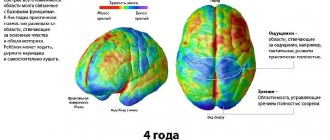The issue of determining the level of personality formation and the stages of its development remains quite controversial. Various concepts are put forward, the focus of which is on the various components of the personality structure and the degree of their formation. Thus, according to some researchers, the level of personality development is directly proportional to the degree of its socialization. On this basis, the criteria of a formed personality are considered as criteria of socialization.
C. G. Jung associated the formation of a mature personality with a person’s willingness to accept responsibility for his actions, to realize the possible consequences of his actions through their projection and subsequent evaluation. A similar opinion was expressed by K. Rogers. Only from his point of view, the responsibility of the individual is closely related not only to awareness, but also to the freedom to be oneself, to manage one’s own life, to make one’s own choices, etc.
Are you an expert in this subject area? We invite you to become the author of the Directory Working Conditions
In modern psychological science, other concepts are proposed that describe in more detail the criteria for personality development.
INTRODUCTION
The relevance of the problem of personality is one of the central ones in psychology; according to one of the psychologists, the origins of man can only partially be understood and rationalized. The secret of personality, its uniqueness, is not fully understood by anyone. The human personality is more mysterious than the world. She is the whole world. It is important to understand and accept the peculiar principle of “unknowability to the end,” and this provision is especially significant in the practice of psychological assistance.
No one, not even the person himself, can fully understand and understand his personality. This state of uncertainty is the beginning of psychological help.
The purpose of this work is to study personality and its formation.
To achieve the goal, it is necessary to consider the following concepts in more depth:
— Personality
— Individual
— Individuality
— Criteria for a mature personality
— Personality structure and its orientation
— Personality formation
Conclusion
Why is personal growth needed? To become an individual, to have your own independent point of view, to develop and achieve your goals. The peaks love brave conquerors. And even if these are not big peaks to begin with, but for them you need to be brave enough and ready to face obstacles on your way. Personal growth criteria will help you accept and understand many moments in your life; they need to be constantly developed and supported.
Only then will you be able to understand all your weaknesses, find places where you stumble and correct what prevented you from achieving what you want. Life doesn't change with a snap of your fingers, it takes a lot of time and work. Personal growth will help not only in self-development, but also in the growth of your professionalism.
The process of self-development will help you find pleasure in what you do, teach you to be strong and courageous, and find loopholes in any life tasks. This is a great opportunity to learn to perceive the world not as a bag of continuous problems, but as a space of limitless possibilities.
Topic: Personal growth, Self-realization
The concept of “personality”, “individual”, “individuality”
The concept of a person is closely related to the concepts of “personality,” “individual,” and “individuality.”
Man is a general concept that reflects the integrity of the human being, the unity of its most diverse life functions and manifestations and is used to characterize the universal qualities and abilities inherent in all people.
Personality is a multifaceted concept that includes the following general provisions:
- the concept of “personality” includes a set of individual, specific characteristics of a person that distinguish him from other people, i.e. a person is always characterized by individuality;
- personality is a unique form of human social existence - individual personality traits are socially significant and are formed in the processes of socialization and interaction with other people;
— a personality is a single whole that has a stable structure consisting of hierarchically related individual personality traits; personality is a dynamic structure, capable of developing and self-organizing, constantly interacting with the social environment.
Personality is the connecting link of all mental activity, determining its continuity, continuity and expediency.
Thus, a personality is a person in the totality of his stable socially conditioned individual mental characteristics, which constitute a single system capable of developing and self-organizing in interaction with other individuals and society.
The word “personality” in English comes from the Latin “persona”. The word originally referred to the masks worn by actors during theatrical performances in ancient Greek drama. A slave was not considered as a person; for this you had to be a free person.
The expression “losing face,” which is found in many languages, means losing one’s place and status in a certain hierarchy. In Russian, the term “lik” has long been used to describe the image of a face on an icon.
At the end of the 20th century, this became a real problem for hundreds of millions of people, due to the severity of social conflicts and global problems of humanity, which could wipe out a person from the face of the earth.
Thus, from the very beginning, the concept of “personality” included an external, superficial social image that an individual takes on when he plays certain life roles - a certain “mask”, a public face addressed to others.
The important role of natural inclinations and innate characteristics in the development of an individual is mediated by social factors. The way of existence of individual life is a manifestation, more specific or more general, of the generic life of a person.
Consequently, even the etymological personal characteristics of a person carry different meanings depending on a particular culture and civilization.
An individual is a specific representative of the human race, a bearer of all the psychophysical and social traits of humanity. An individual is both a newborn and an adult, who is also a person. An individual has both general characteristics, such as the integrity of the psychophysical organization, stability in interaction with the outside world and activity, and individual qualities and their totality that distinguish him from other individuals (emotionality, sensitivity, rationality, etc.).
Another term “individuality” is much more meaningful, denoting the uniqueness and originality of a person in all the richness of his personal qualities and properties. A person appears first as an individual, a “random individual,” then as a social individual, a personalized social group, and then as a personality. The more significant a personality is, the more universal, universal characteristics it represents.
Individuality is the unique originality of any phenomenon that separates beings, humans. In the most general sense, individuality, as something special, characterizing a given individuality in its qualitative differences, is contrasted with the typical as something general, inherent in all elements of a given class or a significant part of them. Individuality not only has different abilities, but also represents a certain integrity of them. If the concept of individuality brings human activity to the level of originality and uniqueness, versatility and harmony, naturalness and ease, then the concept of personality supports the conscious-volitional principle in it. A person as an individual expresses himself in productive actions, and his actions interest us only to the extent that they receive an organic objective embodiment. The opposite can be said about personality; it is actions that are interesting in it.
If you take a newborn child, he will not be a person. This is a biological creature that has the abilities of the genus Homo sapiens: a body configuration that allows for upright posture, a brain structure that allows for the development of intelligence, a hand structure that provides the possibility of using tools in the future, and other natural prerequisites for the development of human qualities. In the process of development and assimilation of the social experience of humanity, the child individualizes, becomes an individual. The formation of personality occurs through the acquisition of a special social quality, inclusion in the system of social relationships and processes in which the individual acts as a subject - the bearer of consciousness, which is formed and developed in the process of activity. An individual who has reached the level of personality is able to act indirectly, that is, to subordinate lower motives to higher ones, to overcome immediate impulses. He is relatively independent of external influences and behaves in accordance with his own goals and intentions.
What kind of personality can be called harmonious?
Under a harmonious personality
implies a balance between the external and internal world of a person. Such people live in harmony with themselves. They are open to everything new and look for the good in everything.
Interesting materials:
How many points do you need to score on Vpr 4th grade? How much white can you add to your pool? How many homeless animals are there in the world? How many budget places are there for the Faculty of Journalism at Moscow State University? How many bonuses can you spend on Sportmaster? How much is 100 g of sugar in tablespoons? How much is 20 g of cocoa? How much is 200 g of butter? How much is 200 grams of sugar in spoons? How much is 320 g of flour?
Criteria for a mature personality (according to L.I. Bozhovich)
Thus, L.I. Bozhovich considered the consistent transformation of needs from natural forms into higher, human ones as a mechanism for the development of a child’s personality. As a result of the mediation of needs by consciousness, an integral motivational system is built. L.I. Bozhovich introduced the concept of “internal position” as a special personal neoplasm, which is the driving force for the development of new mental qualities in a person. The factors determining the internal position were the correlation of the child’s needs and aspirations with his capabilities and the requirements of the environment. The mechanism of development of the child’s psyche in the personality theory of L.I. Bozhovich is the child’s awareness of his needs and capabilities, correlating them with personal aspirations and social attitudes.
L.I. Bozhovich also expressed some ideas about the possible content of the internal position during periods of maturity. Lidia Ilyinichna paid much attention to the subjective side of motivation, feelings and experiences as a reflection of the dynamics of a person’s relationship with the reality around him.
An adult actively builds his own life as an integral system of life relationships and activities over time, uniting the past, present and future. As a result, mechanisms that carry out this holistic regulation arise in the “internal position” of the individual. The study of the personality of an adult as a subject of life allowed N.R. Salikhova to name one of the mechanisms for the development of the personality of an adult the functional mechanism of barrier-realizability of personal values. This mechanism operates in the mode of coordination and mismatch of the importance and availability of values.
Coordination is expressed in the desire to reduce the distance between the parameters of importance and availability of value through external or internal activity of the individual. The activity of the individual can be adequate to achieving the set goal, and then the person realizes what he can realize in life and appreciates what he has. Also, activity can be compensatory, in which case a person reduces the value of what is not available. Metaphorically, compensatory activity can be expressed in the words of well-known proverbs: “Better is a bird in the hand than a pie in the sky,” “If you chase two hares, you won’t catch either.” An indicator of the coordination mode is the degree of realizability - the relationship between the importance and accessibility of the value.
The discrepancy is expressed in multidirectional changes in the parameters of importance and availability of value. An increase in one of them leads to a decrease in the other. Thus, the inaccessibility of a value increases its importance; what is inaccessible seems even more valuable and important. The availability of value reduces its importance; accordingly, what is realizable and accessible depreciates. In this case, the “pie in the sky” will be much more valuable than the “bird in the hand,” precisely because it is not caught. What is available in the accessible zone loses value: it is difficult to value sand in the Sahara and ice in Antarctica. This trend is also reflected in Russian folk proverbs: “It’s good where we are not,” “What we have, we don’t keep; when we lose, we cry.” In this case, the factor motivating development is precisely inaccessibility. Its indicators can be problematic, as a discrepancy between the importance and accessibility of a value (importance is high, accessibility is low) and barrier, as a direct proportional correspondence of importance with the difference “importance-availability”. The described mechanism of feasibility-barrierness of personal values illustrates the processes of mental development of an adult personality, in the context of the personality theory of L.I. Bozhovich.
So, what are the necessary and sufficient criteria for a mature personality?
Let us use the considerations in this regard by the same author of the monograph on personality development in children, L. I. Bozhovich. Essentially, she identifies two main criteria. First criterion: a person can be considered a person if there is a hierarchy in his motives in one specific sense, namely, if he is able to overcome his own immediate motives for the sake of something else. In such cases, they say that the subject is capable of indirect behavior. It is assumed that the motives by which immediate impulses are overcome are socially significant. They are social in origin and meaning, that is, they are given by society, brought up in a person.
The second necessary criterion of personality is the ability to consciously manage one’s own behavior. This leadership is carried out on the basis of conscious motives, goals and principles. The second criterion differs from the first criterion in that it presupposes a conscious subordination of motives. Simply mediated behavior (the first criterion) may be based on a spontaneously formed hierarchy of motives, and even “spontaneous morality”: a person may not be aware of what exactly made him act in a certain way, nevertheless, he may act quite morally . So, although the second feature also refers to mediated behavior, it is conscious mediation that is emphasized. It presupposes the presence of self-awareness as a special instance of personality.
Personality structure and its orientation
The structure of any complex phenomena, and the human personality certainly belongs to them, is a collection, hierarchy and a certain interaction of various elements. Any structure has a certain stability and at the same time is subject to various changes - progress and regression - up to collapse, which is characterized by the concept of destruction. Destructive phenomena in the personality structure lead to various kinds of deviations, called deviant behavior.
To a first approximation, personality can be considered as the structural value of biogenic, psychogenic and sociogenic components, which gives grounds for identifying the biological, psychological and social structures of personality, studied respectively by biology, psychology and sociology.
The biological structure of personality cannot, of course, be taken into account by sociology, not only in the aspect of deformation of this structure, since this disrupts normal interactions between people. A sick or disabled person cannot perform all the functions that a healthy person can perform.
More related to the social is the psychological structure of the individual, including the totality of emotions, experiences, volitional aspirations, memory, abilities, etc. What is important here is not only various types of deviations, but also the normal mental field that accompanies the individual’s activity.
But the sociological structure of personality is not reduced to a set of mental, essentially subjective, qualities. Consequently, when determining the social structure of an individual, the matter cannot be reduced only to the subjective side. After all, the main thing in a person is his social quality.
The sociological structure of the individual includes a set of objective and subjective properties of the individual that arise and function in the process of his various activities, under the influence of those communities and associations to which the person belongs. Hence, the most important characteristic of the social structure of a person is his activity as independence and as interaction with other people, which is fixed by the concept of the subject of activity.
In addition, if we consider personality as a system, then we can distinguish two main subsystems, or two worlds of personality:
one is the internal, world of consciousness, hidden from others and often incomprehensible and unconsciously “living” for the individual himself;
the second is active, open to people, allowing them not only to observe external manifestations of personality, but also to penetrate into its inner life, to guess what passions and their struggles take possession of a person.
The inner and outer worlds are closely connected. However, in each specific case this relationship turns out to be ambiguous. One of its poles is the correspondence, the “coincidence” of acts of consciousness and behavior, while the other, on the contrary, is their complete inconsistency with each other, opposition.
Psychological structure of personality: the relationship between biological and social.
There are no two identical personalities on earth; each personality has its own structure. However, there is a lot in common, which allows us to highlight the personality structure in general, which consists of four sides:
1. Block of mental phenomena (motivational) - orientation (stable system of motives):
drives, desires, aspirations, interests, ideals, worldview, beliefs, needs);
2. Personal experience - a person’s acquisition of social experience (socialization). This experience includes the knowledge, skills and abilities necessary for his life:
- knowledge - a system of scientific concepts about the laws of nature, society, the formation and development of man and his consciousness;
- skills - a person’s ability, based on knowledge and skills, to perform work productively, efficiently and in a timely manner in new conditions;
- skills - automated components of purposeful conscious activity;
3. The block for regulating personal behavior (self-control system) includes forms of mental cognitive processes, in particular: individual characteristics of sensations, perception, attention, memory, observation, imagination, thinking, speech;
4. Biologically determined properties and qualities of personality:
- anthropological characteristics - race, gender, age, etc.;
- physical features - body size and its structural and mechanical properties;
- external anatomy of the body;
- functional and anatomical features;
- biochemical characteristics and pathologies of isolated elements;
- properties and types of temperament.
The derivatives of these basic substructures are:
Character is:
1. a set of basic, distinctive properties of a person, manifested in the peculiarities of his behavior and attitude to the surrounding reality;
2. holistic formation of the individual, which determines the characteristics of his activities and behavior.
Abilities are a mental property of a person, which is a condition for the successful performance of certain types of activities.
Concept by A. A. Rean
Summarizing the most well-known theories, the focus of which is the psychological analysis of the main criteria for personality formation, A. A. Rean suggests considering four basic criteria:
- responsibility;
- tolerance;
- self-development;
- positive thinking (positive perception of the world).
The last criterion is integrative; it is realized not only independently, but also being present in all the others.
According to the concept of A. A. Rean, the formation of personality is not limited to gaining autonomy and independence in decision making. The statement that personality formation is a process that has no logical conclusion and never stops indicates the infinity and unlimited possibilities of personality self-actualization. According to the researcher, in the process of its development, a person overcomes a long path, which includes, firstly, the formation of the ability for self-determination, self-government, and the subordination of some motives of activity to others (more socially significant); secondly, the successful implementation of existing forces, inclinations and resources; thirdly, the ability to overcome the limitations of one’s own self and actively master more global and significant values.
The process of personality formation is influenced by a significant number of factors, which include individual (mainly biologically determined) and age-related characteristics of a person, qualitative and quantitative characteristics of relationships with people around him (including in the family), success in professional activity (or lack thereof) ) etc. Thus, the process of personality formation cannot be uniform, and therefore changes in the nature of relationships at certain stages of life are progressive.
Personality formation
The main factors in personality formation include:
The environment is the most important factor in a person’s socialization and development. Environment is the environment, conditions, circumstances in which a person grows, lives and works.
Highlight:
- Microenvironment - contact, i.e. a person’s immediate environment (parents, educators, relatives, school, “street”, etc.);
- social environment - specific social relations, traditions, moral and legal principles under which a person is born and lives;
- natural environment - certain climatic, geographical conditions that form the ethnopsychological characteristics of the individual.
Heredity is the genetic transmission of certain qualities and personality traits from generation to generation;
Training, upbringing, education;
The degree of adequacy of a person’s inclusion in work activity.
You can have good heredity, be in a favorable environment, get qualified teachers, but still remain an intelligent useless person. Only in the process of work does the formation and development of personality occur.
The process of personality formation can be represented as the development of will, and this is not accidental. A weak-willed, impulsive action is an impersonal action, although the loss of will can only be spoken of in relation to the individual (after all, you cannot lose what you do not have). Therefore, authors who consider will to be the most important personality trait are right from an empirical point of view. Will, however, is neither the beginning nor even the “core” of personality; it is only one of its expressions. The real basis of personality is that special structure of the subject’s total activities that arises at a certain stage in the development of his human connections with the world.
The question of the mechanisms of personality formation, which is extremely important for the theory of personality and for the practice of education, has not been sufficiently developed.
The spontaneous mechanisms of personality formation include the general mechanism of shifting the motive to the goal, as well as more special identification mechanisms and the mechanism of accepting and mastering social roles. These are spontaneous mechanisms, because the subject, exposed to their action, is not fully aware of them, and in any case, does not consciously control them. They dominate until adolescence, but even after that they continue to participate in personality development along with conscious forms of self-construction.
The named mechanisms, to the extent that they relate to the development of the individual, act in line with the general, general process of objectifying the need for communication. This need is being given increasing importance in psychology. In terms of fundamentality, it is equal to organic needs: it is just as vital, for its dissatisfaction leads to a deterioration in the physical condition of infants and cubs of higher animals, and even to their death. It turns out to be the main driving force behind the formation and development of personality.
The mechanism of motive shift operates at all stages of personality development, only with age those main motives of communication that direct this shift to mastered actions change and become more complex - after all, as one grows, the circle of social contacts and connections becomes wider and wider.
The mechanism begins to operate from an early age: children imitate their parents in everything - in manners, speech, clothing, activities. All this is reproduced purely externally, but at the same time the internal traits of the parents are also absorbed. This is very clearly manifested in role-playing games, especially when playing family games. A characteristic feature of identification is that it occurs, especially at first, regardless of the child’s consciousness, and is not completely controlled by the parents. This places a special responsibility on educators for the quality of their own personality. At later age stages, the circle of persons from whom a sample is selected—the object of identification—extremely expands. Among these may be not only real people, acquaintances or strangers, but also literary heroes. But usually there comes a time when the “sample” loses its attractiveness and subjective significance, and this is natural: the person has received something important and necessary from the model, but she has her own path. De-actualization of a model marks the completion of a certain stage in the development of a personality, its rise to a new level: it turns out that new relationships have developed, new motives have appeared, and this forces one to set new goals and look for new ideals.
The mechanism of accepting and mastering social roles also operates from an early, preschool age: an older preschooler dreams of becoming a schoolchild, etc. This mechanism is in many ways similar to the identification mechanism, but is much more generalized. There is often no personalization of the mastered standard - a social role or social position. At a more advanced phase, the individual often merges with the role, it becomes part of his personality, and the loss of the usual role is experienced as the loss of part of the personality.
Mastering social roles is directly related to the formation and life of the individual, because in the course of it:
1) new motives appear;
2) there is a subordination of motives;
3) systems of views, values, ethical standards and relationships are modified.
All of the named mechanisms of personality formation can also take conscious forms, but awareness is not necessary for their action, and is often impossible. As a rule, all these mechanisms act together, intertwining and mutually reinforcing, and only mental abstraction allows us to consider them separately .
How do most people assess the level of personality development?
While psychologists are looking for the surest way to determine how psychologically mature a person is, ordinary people, sometimes unconsciously, evaluate each other in communication according to these indicators:
- Patience
- Openness and respect for boundaries in expressing needs and opinions
- The ability to refuse without looking for excuses and to accept refusals with dignity
- Accepting the right to make mistakes, both on your part and on the part of other people
- The ability to distinguish the important from the unimportant
- Responsibility for your own thoughts, feelings and actions, as well as awareness of your right to them
- Showing empathy
- The ability to refuse to idealize the world and situation
- Finding other people's true motives instead of blaming them for not living up to your personal principles and views
- The ability to draw conclusions from a situation without generalizing to other similar cases
- Communicating with people as equals - without arrogance and without trying to earn pity or praise
- Objective assessment of yourself without regard to public opinion
Bibliography
- Eysenck G.Yu. Personality structure / Transl. from English. - M.; St. Petersburg: KSP+; Yuventa, 1999. - 463 p.
- Albukhanova-Slavskaya K.A. The problem of personality in psychology // Psychological science in Russia of the twentieth century: problems of theory and history. - M.: IP RAS, 1997. - P.270-373.
- Antonova N.V. The problem of personal identity // Questions of psychology. - 1996. - No. 1.
- Antsyferova L.I. Personality in difficult life conditions: rethinking, transformation and psychological protection // Psychological Journal. - 1994. - T.15, No. 1. - P. 3-18.
- Antsyferova L.I. Psychology of everyday life, the life world of the individual and the “technique” of her existence // Psychological Journal. - 1993. - T.14, No. 2. - P. 8-17.
- Antsyferova L.I. Systematic approach to the study and formation of personality // Problems of personality psychology. - M., 1982.
- Aseev V.G. Motivation of behavior and personality formation. - M., 1976.
- Asmolov A.G. Personality as a subject of psychological research. - M.: Publishing house Moscow. University, 1984. - 104 p.
- Asmolov A.G. Personality psychology: principles of general psychological analysis. - M.: Smysl, 2001. - 416 p.
- Akhverdova O.A. Personality and behavioral disorders in children and adolescents with organic brain failure: Textbook. allowance / O.A. Akhverdova, I.V. Boev, N.N. Voloskova; Stavrop.state university. - Stavropol, 2000. - 273 p.
- Akhmerov R.A. Biographical personality crises: dis. ...cand. psychol. Sci. - M., 1994.
- Ball G.A. The concept of adaptation and its significance for personality psychology // Questions of psychology. - 1989. - No. 1.
- Batarshev A.V. Psychology of individual differences: From temperament to character and personality typology. - M.: Vlados, 2001. - 255 p.
- Batarshev A.V. Psychology of personality and communication. - M.: Vlados, 2004. - 246 p.
- Berezin F.B., Miroshnikov M.P., Rozhanets R.V. Methodology for multilateral personality research (in clinical medicine, in psychohygiene). - M.: Medicine, 1976. - 176 p.
- Berko D.V. The influence of parenting styles on the personal characteristics of girls: Author's abstract. dis. ...cand. psychol. Sci. - Stavropol: SSU, 2000. - 20 p.
- Bekhterev V.M. Selected works on personality psychology: In 2 volumes - Vol. 1: Psyche and life / Responsible editor: G.S. Nikiforov, L.A. Korostyleva. - St. Petersburg: Aletheya, 1999. - 256 p.
- Bekhterev V.M. Selected works on personality psychology: In 2 volumes - Volume 2: Objective study of personality / Responsible editor: G.S. Nikiforov, L.A. Korostyleva. - St. Petersburg: Aletheya, 1999. - 283 p.
- Bleikher V.M., Burlachuk L.F. Psychological diagnostics of intelligence and personality. - Kyiv: Vishcha School, 1984. - 142 p.
- Bodalev A.A. Personality and communication. - M., 1995. - 328 p.
- Boev I.V., Shurupov V.A. Personal and psychological characteristics of leaders at the municipal and regional levels in the modern period of Russia. - Stavropol: SSU, 2002. - 88 p.
- Bozhovich L.I. Personality and its formation in childhood. - M.: Education, 1968. - 464 p.
Attention!
If you need help writing a paper, we recommend turning to professionals. More than 70,000 authors are ready to help you right now. Free adjustments and improvements. Find out the cost of your work
Free estimate
0
Size: 34.33K
Downloads: 239
07.11.13 at 12:47 Author: DLife
Liked? Click on the button below. It's not difficult for you
, and we
are pleased
).
To download Abstracts for free at maximum speed, register or log in to the site.
Important! All presented Abstracts for free downloading are intended for drawing up a plan or basis for your own scientific works.
Friends! You have a unique opportunity to help students just like you! If our site helped you find the job you need, then you certainly understand how the job you add can make the work of others easier.
Add a job
If, in your opinion, the Abstract is of poor quality, or you have already seen this work, please let us know.
Similar works
- Psychology of Personality
- Emotions and feelings
- Psychology of Personality
- Psychology of Personality
- Describe the relationship between the concepts “person”, “individual”, personality”
- Emotional states
- Emotions and feelings
- Feelings and emotions
- Types and functions of emotions
- Feelings and emotions
- Emotions and feelings
- Interaction between the individual and society
- Emotional states
- Personality as a subject and object of politics
- Personality and society
- Psychology of Personality
- Psychology of Personality
- Socialization as a factor in personality development: the process of formation
- Man, biosphere and cosmic cycles
- Socialization as a factor in personality development: stages, methods










